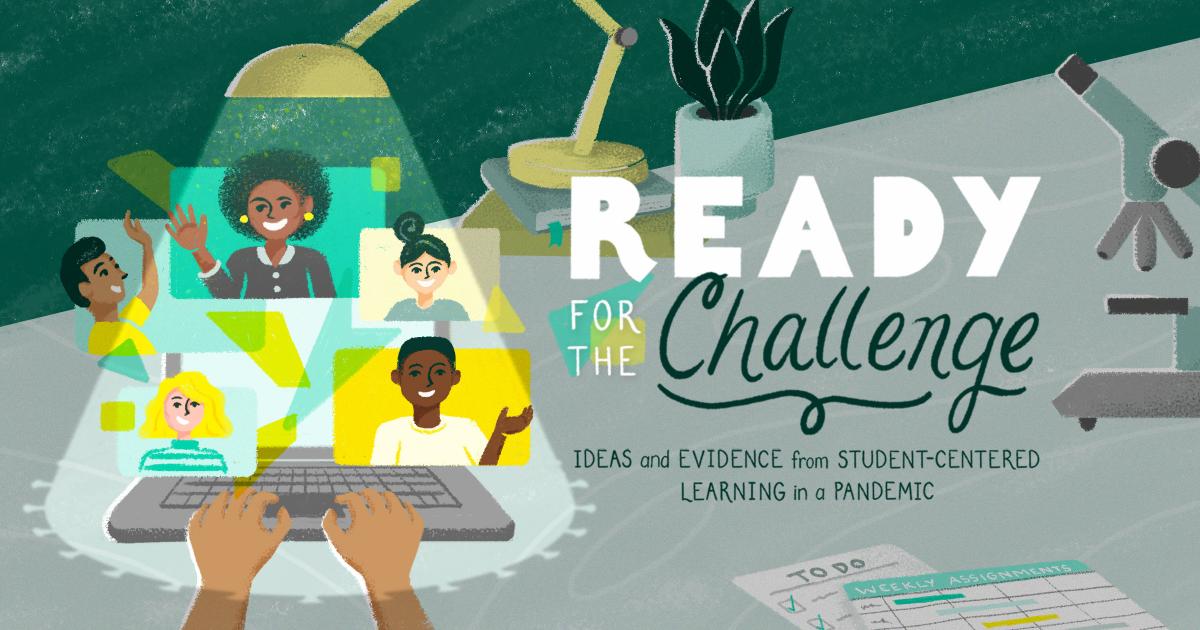This post is part of a larger blog series this year, looking at how schools have used student-centered strategies to respond to the pandemic. This includes both learning designs, but also the success indicators schools use to know whether they are successful. Here, we go in depth on one area of success: student wellness.
The specter of “learning loss” has occupied the attention of educational leaders and the news media since the start of the pandemic.
And while the academic consequences of the pandemic cannot be overstated, teachers, health providers, and families of young people have been voicing a more fundamental, more urgent concern: are the kids alright? Are they well? (See these pieces from NEA, Stanford Children’s, and CAREI.)
Ensuring access to food, healthcare, and stable housing for students continues to be a top priority for schools and districts whose students’ lives have been upended by Covid.
Simultaneously, schools have confronted a growing mental health crisis among K-12 students. A disturbing rise in teen suicide was already underway prior to the pandemic that has only grown worse since Covid first shut down schools. Social isolation, distance learning fatigue, new family responsibilities, pandemic-related anxiety, hopelessness from ongoing race-based violence, and, tragically, the loss of loved ones to Covid have all chipped away at the emotional wellbeing of America’s young people.
The importance of physical and emotional wellbeing to successful learning is intuitive to anyone who has ever sat through a class period after skipping breakfast, pulling an all-nighter, or experiencing a breakup. As Emma Lynn, a “learning coach” at Norris Academy in Mukwonago, Wisconsin put it, “you’re not going to have a successful learner if they’re not well.”

Monitoring wellness to customize student supports
Like other schools across the country, the schools and districts we partnered with for this series faced a host of new challenges related to student wellness.
And in many ways, these schools were well-positioned to take on these challenges, having intentional practices and measures that elevated wellness to the fore for all students.

Take Norris Academy: not only is wellness one of four “dimensions” of learning prioritized and tracked by the school (the others being academic, employability, and citizenship), it is actually treated as paramount. “We lead with wellness,” according to Paula Kaiser, Norris’ Director of Development. When a student enrolls at Norris, their first point of contact is with Autumn Smith, the “wellness liaison” who guides students through a process of identifying potential barriers to learning, whether they be social, emotional, behavioral, or physical.
Wellness challenges become a core part of the learner’s “urgency story”—a narrative description of the learner’s most pressing needs that gets updated at least every 90 days.
Recognizing the role that emotions play in students’ readiness to engage in learning activities, Norris staff had developed a protocol to gauge students’ emotional state well before the pandemic. Students would share a color—green (happy/content), blue (sad/tired), orange (excited/anxious), and brown (grumpy)—to indicate their “zone of readiness” at the beginning of daily check-ins.
When school went remote, staff added the zone of readiness indicator to the top of learners’ daily agenda document. Having a visual way to track students’ emotional states “provides the opportunity for [us] to say, ‘Oh my gosh, look at so and so, they’ve been feeling blue this whole week. I need to go check in with them,’” Kris Koneazny told us. Even after going back in person, they kept this pandemic design change because it was “a simple way for us to track wellness.”
The team at Crosstown High in Memphis uses a similar approach. Each week, students receive a “Wellness Wednesday” survey that asks them to report how they’re doing, as detailed in a previous post. Lauren Mueller, a Crosstown teacher, uses survey responses on a week-to-week basis to monitor and address her students’ rapidly-shifting needs. “Maybe you met with your advisor last week, you had a great conversation with him, life was good. But this week you are stressed out about a project and you just really want to talk to someone.”
The educators we spoke with did not use measures of wellness as progress indicators, necessarily—they did not expect to end the year with all students in the green “zone of readiness,” for instance—but as flags to activate needed supports.

Teaching and learning wellness
We also heard from a number of educators whose schools took a very proactive approach to wellness in addition to a reactive or responsive one. Social and emotional learning (SEL), for example, was a part of the curriculum at all five partner schools and districts.
Last school year, Spring Lake Park School District in Minnesota began screening all students in grades K-6 for social-emotional learning needs. Additionally, students at all grade levels have begun to track progress toward not only academic competencies but also “life competencies.” Performance indicators such as “maintaining balance” and “advocating for oneself” were included to promote each student’s development “as a healthy and productive human in academics, career, and life,” according to Elizabeth Nordgren, a Coordinator of Innovative and Personalized Learning for the district.
At Crosstown High, the emphasis on wellness as a learning goal is even more explicit: one of the school’s twelve overarching competencies is “sustaining wellness.” As they progress through their high school years, students are expected to “build life practices that foster and protect [their] health, joy, and purpose.”

Reversing the “guts” and the “gravy” of schooling
Not every school we spoke to had formalized mechanisms for gauging wellness or the skills that promote it, but they all made a point to prioritize it.
When we asked how the middle school team at West Hawaii Explorations Academy approached data and assessment last year, Kim Manuel told us that the biggest shift was “figuring out and understanding if our students were really okay.” They continued to use the same academic content rubrics for project-based learning, but they needed more. Last year, “data was sometimes as simple as, ‘How are you? Give me a thumbs up, thumbs down, in the middle.’”
The pandemic required Manuel’s middle school team to reverse what they had viewed as the “guts” and the “gravy” of schooling: “This year, the academics was the gravy. The emotional and social learning and wellbeing of our kids was the guts of what we were there for and our purpose.”

This need to prioritize wellbeing over academics was not lost on the students we had the privilege of interviewing. We asked Arianna, now a Crosstown junior, what kinds of data or evidence she would look at to decide if a student had been successful this year, if she were in charge. Her response? “I cannot stress this enough: what you should look at is how they’re doing mentally.” Having witnessed her peers struggle with the stress of distance learning and increased family responsibilities due to the pandemic, Arianna viewed the link between mental health and student success as self-evident.

Conclusion
The student-centered schools we learned from were at various stages of centering “wellness” in their everyday work with students—in part driven by the particular needs of their respective student populations—but all made room for it.
One major reason these schools have been able to focus on wellness is because their staffs have chosen to track evidence of it. Not using sophisticated, validated instruments, per se, but using tools, frameworks, and practices that reflect their local contexts and student-centered philosophies.

About This Series
This blog post is part of a larger series exploring the practices and success indicators used for student-centered learning in a pandemic—and beyond. We are grateful to the Leon Lowenstein Foundation for their generous support for this series.
Read More & See Other Posts
